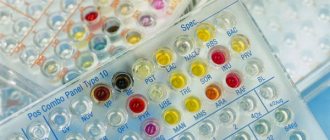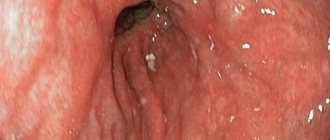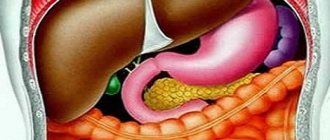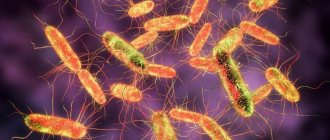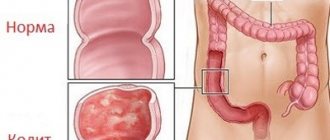Home / Roundworms
Back
Published: 11/12/2019
Reading time: 7 min
6
28727
A person is never left alone - there are always about three to four kilograms of bacteria with him, one way or another influencing and changing our life activities. However, in addition to beneficial companions, humans are sometimes accompanied by various pathogenic organisms and parasites. One common species will be discussed here - roundworms. No one is immune from infection with these worms, so you may be interested in ascariasis in adults, the symptoms and treatment of this disease.
Roundworms, also known as Ascaris lumbricoides, are nematodes, or roundworms.
The main difference between roundworms and other, more common worms, and at the same time the greatest danger lies in the fact that roundworms have a very complex migration path throughout the body. While the same pinworms parasitize exclusively in the intestines, roundworms can also penetrate the blood vessels, lungs, liver, right atrium, inferior vena cava and even the brain.
Infection with roundworms occurs only in one way - a person must swallow mature roundworm eggs (fecal-oral transmission). This usually occurs when contaminated fruits and vegetables are ingested.
While in the human body, roundworms undergo two phases:
- migration, aka early;
- intestinal, aka late.
Larvae emerge from mature eggs swallowed by humans. They penetrate the wall of the small intestine and end up in the bloodstream, through which they migrate to the lungs and liver. However, history knows cases of detection of roundworms in many other places, right up to the eyeball.
The larvae feed on blood serum , later, when their need for oxygen increases, they switch to red blood cells, which are known to contain large amounts of this gas. It is this need that explains their desire to get into the lungs, where the larva, moving through the bronchi, enters the oropharynx, where it is swallowed and re-enters the gastrointestinal tract, returning to the small intestine. Here the migratory stage ends and the intestinal stage begins.
After about three months in the intestine, the larva becomes sexually mature and gives birth to offspring. A person at this stage is not dangerous to others, since the eggs must mature within one month, while being in the soil.
Author:
Trofimova Irina
Didn't understand the article or need help? Ask a question now and get an answer.
auto RU
Ascaris is characterized by some freedom in its life cycle. Some larvae linger in the liver, where they are destroyed by protective enzymes. This will be accompanied by jaundice and severe pain . In addition, sometimes parasites will come out with a wet cough with copious sputum.
What processes occur after infection?
Ascariasis in adults depends on the stage of infection and the predominant damage to internal organs.
From the small intestine, the larvae enter the bloodstream within 3–4 hours after ingestion. Transformations in the liver begin on days 5–6, in the lungs - on days 10. This is the time the larvae molt, when they shed their surface shells. The mature larva in the egg looks like a curled up worm. Breaking the microcapillary network and acini of the lung tissue, roundworm larvae come out with coughing movements into the bronchi, trachea and pharynx. Here they are re-swallowed and again enter the small intestine with food. There are 2 more molts in 14 days, then 10 weeks the parasites mature to a sexually mature state, when egg laying begins.
The initial stage of migration is accompanied by the appearance of decay products of larvae, destruction of intestinal walls and capillaries, lung and liver tissues. Scientists consider the allergens produced by roundworms to be the most powerful compared to other parasites.
The process of sensitization of the body is accompanied by the production of antibodies. The histological picture shows multiple infiltrates in the affected tissues, destruction of capillary blood flow, hemorrhages (hemorrhages).
The further intestinal stage of the roundworm life cycle is associated with:
- with the direct effect of helminths on the intestinal wall (impaired motility), irritation during the movements of roundworms causes a reflex spasm of the intestines;
- indigestion - occurs due to parietal changes, the appearance of difficult absorption and assimilation of protein components of food, fats, and a decrease in the activity of certain enzymes (lactase);
- the influence of metabolic products of parasites (for example, a certain polypeptide is a toxic poison for the central nervous system);
- changes in nitrogen metabolism;
- hypovitaminosis (due to impaired absorption of vitamins);
- migration beyond the boundaries of the small intestine.
The accumulation of a large number of parasites is characteristic, which contributes to the formation of a tangle and mechanical obstruction, less often rupture and perforation of the intestinal wall.
Roundworms are able to penetrate the bile ducts, pancreatic passages, respiratory tract, and vermiform appendix. Video information from this process is used to train medical workers. Non-doctors can find enough indicative videos about ascariasis on the Internet.
The accumulation of a large number of parasites causes symptoms of acute intestinal obstruction and intussusception. The dependence of intestinal damage on the massiveness of infection has been proven; in the presence of several adult individuals, intestinal obstruction is formed; even one roundworm can cause intussusception.
Continued sensitization of a person leads to suppression of the immune system and intoxication.
Roundworms - what is it?
Roundworms are dangerous worms belonging to the order of roundworms. The body of these parasites is spindle-shaped and colored reddish. After death it becomes white-yellowish. These are quite large helminths. The length of males reaches 25 cm, and females – 40 cm. They are 2–6 mm wide. In appearance, roundworms look like earthworms. Make sure of this by looking at the photo.
Roundworms have a detrimental effect on both adults and children
These worms parasitize mainly in the intestines, in the small part. With the sharp ends of the body they are attached to its surface.
Roundworms are heterosexual parasites. They are extremely prolific. The female releases up to 240 thousand eggs per day. But in order for them to become larvae, they must be fertilized by males.
Consider the life cycle of these parasites:
- Ascaris eggs (fertilized and unfertilized) are excreted from the human body along with feces. Further development is possible only in fertilized eggs. They are covered with a multilayer protective shell, which protects them from death in the external environment.
Since roundworms are classified as geohelminths, they undergo a mandatory stage of ripening in the soil. To complete this process, appropriate climatic conditions are required - humidity should be in the range of 4–8%, temperature in the range of +13–+36 °C. Access to oxygen is also important. Under such conditions, a larva forms within 10–12 days, and the eggs become invasive (infectious). Until they pass this stage they are not invasive.
If the temperature drops below +12 °C, the development of the larvae stops, but they do not die. Eggs can remain in the soil, remaining viable for 7–12 years. To destroy them, you need a temperature of -30 ° C, then they will die within a day. At -20°C – in 20 days. Parasite eggs are afraid of high temperatures. When they reach boiling temperature they die instantly.
- When infective larvae enter the body, they get rid of their protective shell and begin to develop into a sexually mature individual that lays eggs.
Most often, infection with roundworms occurs in the summer-autumn season.
In the human body, helminths go through 2 stages of development:
- Migration – early stage of the disease. At this stage, the larvae are released from the eggs, enter the bloodstream through the veins and spread throughout the body. They enter the liver, then the heart, lungs, where they grow and develop. After this, they migrate to the pharynx, from where they are sent to the stomach and then the intestines. This stage lasts 12–14 days.
- Intestinal – once in the intestines, worms reach sexual maturity in 2.5 months and begin to reproduce. Briefly, the sequence of development of roundworm is shown in the diagram:
The lifespan of roundworms in the human body does not exceed 1 year. After this, they die and are taken out. If re-infection does not occur, self-healing occurs. But you shouldn’t wait for this, because roundworms are very dangerous. They injure internal organs, destabilize metabolic processes, lead to vitamin deficiency, and provoke severe allergic reactions.
The figure shows the development cycle of roundworm Important! If the life cycle of parasites is disrupted, they do not migrate to the intestines, but remain in various internal organs (heart, brain, lungs, liver), destroying them.
A large number of worms form colonies that clog the passages of the excretory organs and provoke the development of obstruction.
It is especially dangerous if roundworms settle in a child’s body. They provoke developmental delays. In especially advanced cases, they cause death.
The route of infection with roundworms is through the mouth. Infectious eggs can penetrate:
- when drinking untreated drinking water;
- when eating poorly washed fruits, as well as vegetables and herbs;
- through dirty hands and household items.
Flies can carry invasive eggs.
Children are especially at risk of becoming infected with these worms, since they often neglect personal hygiene rules.
Medicines for roundworms for the treatment of adults
Below we list effective tablets for roundworms for adults. But since each drug has its own contraindications, you should consult a specialist before using them.
Dekaris
The second name of this medication is Levamisole. It affects the muscles of helminths, paralyzing them (it does not affect the larvae, so it is not prescribed in the migratory stage of the disease). After this, the worms themselves are removed from the intestines with feces. Indications for the use of this medication:
The medicine is taken 1 time per day before bedtime at a dose of 150 mg. Take the tablet with water. While taking Decaris, you should not drink alcohol. The drug is contraindicated in pregnant women. When using it, the following undesirable effects may appear: migraine, itching, gastrointestinal disturbances, rash.
Piperazine
If you want to know which roundworm medicine can be taken during pregnancy, the least toxic of them is Piperazine. The active substance is practically not absorbed from the gastrointestinal tract into the bloodstream, which explains the lack of negative effects on the human body. The drug is prescribed for enterobiasis and ascariasis. The treatment regimen is as follows:
- Adults take 4 grams of the drug.
- The medicine should be taken on an empty stomach 2 times a day.
- The duration of therapy is two days.
Since Piperazine simply paralyzes the helminths, but does not kill them, after using the medication it is necessary to do an enema or take a laxative to ensure the removal of parasites. The only contraindication when taking this medicine is pathology of the central nervous system.
Important! The drug affects only sexually mature helminths, so at the migratory stage it cannot destroy the parasite larvae.
Vermox
This medicine for roundworms is most effective for humans, since it has a detrimental effect on both the larvae and mature individuals of the helminth. The effect of the drug is due to its penetration into the intestines and liver. The death of parasites occurs 2-3 days after the start of treatment.
For the treatment of adults, use one tablet once a day for three days. If tests show incomplete destruction of parasites, a second course is carried out only after 14 days. During therapy you need to give up fatty foods, alcohol, everything sweet and fried. The medicine is contraindicated for gastrointestinal and liver pathologies. Also contraindicated is lactation and the period of gestation.
Naftamon
The medication is available in capsule form. The active substance paralyzes the muscles of parasites. Thanks to a special capsule, the effect of the drug is manifested only in the duodenum, where many helminths (pinworms, roundworms) live. Paralyzed helminths are removed from the intestines during the act of defecation.
While taking Naftamon, you do not need to use a laxative. Before starting treatment, the patient is prescribed a special diet excluding fatty and spicy foods, dairy products, sweets, pickles and smoked foods. Naftamon is consumed 3 hours before meals in the amount of 5 tablets. Duration of therapy is approximately 3-5 days. In case of intensive invasion, the course of treatment is repeated after a three-week break.
What are roundworms in humans and ascariasis?
Visually, the pathogen looks like a white roundworm parasitizing the intestines. The disease of the same name, caused by roundworms, has characteristic symptoms. Advanced ascariasis can lead to death. For example, in 2010, 2,700 deaths were recorded from infestation by worms of this species. People tend to perceive ascariasis as a daily nuisance and delay treatment. This may result in a worsening of the condition.
Life cycle of human roundworm development
- Once in the body, the parasite begins to “shed.” Ascaris eggs, releasing special enzymes, dissolve the shell cover. The structural features of the roundworm allow it to penetrate the bloodstream after invasion. The veins behind the walls of the small intestine are only the initial stage. Wandering through the bloodstream, roundworms partially invade other organs. When inhaled, parasites can cause coughing. When the sputum is swallowed, the human roundworm worms return to the intestines. Here parasites live, grow up and lay eggs. The stage cycle lasts from 8 to 15 days.
- Having settled in the intestines, the human roundworm feeds on oxygen-rich blood cells and continues to develop. If the parasite does not have enough oxygen, then it sets off in search of food throughout the body. This is due to roundworm infection of other organs with cells saturated with oxygen.
- After 75-100 days, individuals enter sexual maturity. The length of the roundworm reaches: male - 20 cm, female - 40 cm. Adult representatives of different sexes mate. A female roundworm is capable of laying a clutch of 250 thousand eggs daily.
Symptoms and signs of ascariasis in adults and children
Initial stage:
- general malaise as a consequence of the presence of roundworms in the body;
- increased body temperature (but not more than 38 degrees);
- cough with discharge containing roundworms;
- wheezing is heard in the lungs;
- roundworm waste contributes to the appearance of urticaria and allergic dermatoses;
- headache;
- Human roundworm worms in a child with mass infestation cause fever, enlarged liver and spleen, and acute allergic reactions.
Signs of worms in humans at the intestinal stage (if ascariasis is chronic):
- constipation, flatulence, itching of the anus;
- a characteristic sign of ascariasis in children is slight grinding of teeth at night;
- immunodeficiency and, as a result, frequent acute respiratory viral infections;
- intoxication with waste from roundworms roundworms causes nausea;
- loss of appetite up to;
- roundworms cause fatigue, hysterics, nightmares, insomnia;
- headache;
- If roundworms take root in the respiratory system, bronchial asthma and pneumonia develop. Suffocation may occur.
Diagnostics
If ascariasis is suspected, the following is prescribed:
- General blood analysis. Deviations from the norm of red blood cells, hemoglobin, eosinophils are considered
- X-rays of light. The presence of manifestations of inflammation caused by roundworms is considered.
- Stool analysis. It is carried out repeatedly (2-3 times). It is being investigated whether roundworm eggs, larvae or worms themselves are found in fecal matter.
- Endoscopy. It is prescribed to examine the duodenum and detect roundworm worms there.
What do roundworms look like?
A large round worm with a non-segmented body, narrowed at the ends, covered with a cuticle. There are tactile papillae on both sides of the parasite. Worms have a triangular, slit-shaped mouth surrounded by “lips” with small teeth on the inside. The color of viable roundworm worms is light pink or yellowish. After death, the parasite acquires a whitish tint.
Common sources of infection
Ascaris eggs enter the body in different ways. If the soil is contaminated with helminths, they will be in the vegetables and fruits grown on it. When swimming in bodies of water, you can accidentally swallow water contaminated with parasites. By the way, they also feel great in a tap with chlorinated water.
You can catch the infection through contact in transport, through money, working in the garden without gloves; for young children, the source of infection is often the sandbox in the yard.
You can bring dangerous ascariasis pathogens into your home with dirty shoes, on the wheels of a baby stroller or bicycle, or on the fur and paws of pets. Insects and rodents - flies, cockroaches, mice - serve as carriers of infection.
You can become infected even faster by eating unwashed vegetables and fruits, as well as by careless cooking of meat and fish.
To avoid misfortune, you must not only eat clean foods, but also wash your hands as often as possible, especially before eating.
https://youtu.be/IiSWrZ2ivp0
Ascariasis in children
A child who is suspected of having ascariasis as a symptom must immediately undergo the necessary tests to establish the accuracy of the diagnosis.
If a child diagnosed with roundworm has not reached the age of 2 years, Albendazole is often prescribed, but you should not treat with this drug yourself without a doctor’s recommendation, especially without reading the instructions, this applies to all medications used in treatment, since they have contraindications.
A pediatrician will prescribe the correct and effective treatment for a disease such as ascariasis, taking into account the individual characteristics of the child’s body, for example, allergies to the components of the drug, the baby’s age, etc.
After treatment, the child must go to the toilet within a maximum of two days; if this does not happen, it is recommended to give him a laxative, since the roundworm damaged or killed by the medicine is excreted in the feces.
Having undergone treatment for the disease ascariasis, it is recommended that the child undergo a course of rehabilitation, since his body has been subjected to stress, which can cause such a symptom as developmental delay, namely, take a course of multivitamins to restore the necessary amount of vitamins and microelements lost during Ascaris lived in the child's body.
About a month later, after taking the medication, the child should be re-examined for the presence of parasites such as roundworm. Since medications do not guarantee 100% elimination of worms, including roundworm, you may need to treat ascariasis a second time.
It is noteworthy that the roundworm, having entered the body and having lived no more than 2 years, will die on its own without reproducing inside the body, but since the spectrum of infection is quite wide, it is recommended that the child be regularly examined at least twice a year for the presence of worms or preventive measures. diseases.
Measures to combat ascariasis infection
When infection has already occurred, the best option is to consult a doctor, do the necessary tests and strictly follow the prescribed treatment regimen; but preventive measures are also good ways to protect your body from parasites:
- Wash your hands with soap more often (after visiting the toilet, before eating, after using public transport, etc.) and instill this habit in children.
- Be sure to thoroughly wash fruits and vegetables that do not undergo heat treatment (it is better to pour boiling water over them).
- Drink only bottled or boiled water.
- Do not leave dishes and food uncovered.
- Fight flies in every possible way and prevent their presence in the house.
- For owners of garden plots, do not use feces as fertilizer and regularly clean the soil from it on your plot, as well as equip it with a proper cesspool.
Symptoms depending on the stage of development of the disease
Photo of a child with ascariasis
Symptoms in adults appear gradually as the parasite “grows up.” In children, as a rule, the pathology immediately shows itself in full, but the migratory stage is almost asymptomatic.
The intensity of the signs of the disease depends on the patient’s age, body weight, phase of pathology and the number of worms in the body. Symptoms of the disease in phases:
- First, migratory or early stage. At this stage, the eggs become larvae. They begin to migrate from the intestines using the circulatory system. As a result of the invasion, the patient may develop an allergic reaction, which will manifest itself in the form of a rash or severe itching. In some cases, the migration stage is asymptomatic, but the person may still feel general malaise and weakness;
- Second (intermediate) phase. The larvae enter the respiratory system, causing the patient to develop a dry (less often wet) cough, chest pain, wheezing in the lungs and shortness of breath. Parasites can also “attack” other organs, such as the heart and liver. This leads to the appearance of associated symptoms, among which the most common is liver syndrome. A sign noticeable to the patient is pain in the right hypochondrium. During diagnosis, if liver syndrome occurs, the doctor can also determine an increase in enzyme activity, an enlargement of the spleen and liver;
- Third, intestinal or late stage. At this stage, the larvae return to the intestines and begin to actively parasitize. They grow to the state of sexually mature individuals, after which they mate. Helminths “rob” useful microelements from the human body, and if they are lacking, they begin to feed on gastric juice. It is at this stage that the most obvious symptoms of helminthiasis appear, namely: abdominal pain, nausea, weakness and dizziness, loss of appetite or gluttony. These are signs characteristic of almost all helminthic infestations that cause intoxication of the body.
Symptoms and treatment of ascariasis are closely interrelated. Depending on the number and intensity of the symptoms of the disease, a medicine is selected for the patient.
It is very important to know the symptoms of all stages of helminthiasis, and not just the most popular factors that indicate helminthic infestation. As a rule, when symptoms of the intestinal phase appear, it is extremely difficult to treat the pathology, since larvae and worms are actively parasitic at this stage
Ascariasis can manifest itself in completely different ways, but the symptoms described above are “classical” and are observed in almost all patients.
It is worth noting that the onset of the disease in children often leads to delayed psychomotor development. This is due to the fact that the pathology significantly affects the functioning of the nervous system.
In adults, this is expressed by insomnia, irritability, and convulsions.
How is diagnosis carried out?
With ascariasis at an early stage, the attending physician has to focus on isolated clinical manifestations. If the patient develops a cough, then usual practice suggests a diagnosis of bronchitis, tracheobronchitis. Fluorographic or x-ray examination helps to identify infiltration of lung tissue.
But the larvae are practically not excreted in the sputum. Therefore, the doctor prescribes treatment for pneumonia with antibiotics and anti-inflammatory drugs. However, these drugs cannot cure the patient. Examination of pleural fluid also makes it possible to detect large numbers of eosinophils in it; ascaris larvae are a rare find. An enlarged liver is accompanied by an increase in the activity of liver enzymes, which is determined by tests.
Since eosinophilia persists and even increases in the blood test of a patient with ascariasis, and signs of anemia appear, the doctor’s most correct decision is to check serological and immunological tests. Difficulties are associated with the lack of immunological laboratory diagnostics in clinics. To get tested, you will have to go to private medical institutions and pay for them.
The enzyme immunoassay method for ascariasis is based on the formation of an antigen+antibody complex with the introduction of standard serum. Special staining and the use of a photoelectrocolorimeter make it possible to quantify the severity of the allergic reaction.
During the intestinal phase of ascariasis, the main method of detection is to examine stool for worm eggs. But detection will be successful only 3 months after infection. In addition, there is a possibility of males parasitizing without females. Then there will be no eggs in the stool. There remains an option for diagnostic treatment of ascariasis using anthelmintic drugs in adults.
The intestinal radiography method makes it possible to detect roundworms against the background of a contrasting substance in the form of thin light stripes or tangles.
Symptoms
Photo: sorokulya.ru
Symptoms of the disease
Symptoms of ascariasis manifest themselves individually in each person and have their own characteristics depending on the stage of infection. Also, the symptoms of roundworms may be hidden, so the doctor should prescribe laboratory diagnostics.
Ascariasis. Symptoms of the initial stage
In adults in good health, the symptoms of the presence of worms in the body are almost invisible, but the symptoms of ascariasis in children are more clear. This stage is characterized by the appearance of allergies, which occurs due to intoxication of the body with waste products of worms and their larvae, as well as tissue damage after their migration. The initial symptoms last for about a week. Treatment for children and adults at this stage is no different, but different symptoms may occur.
- Many people believe that the main symptom of ascariasis in children is teeth grinding at night. But this is rather a popular belief and this behavioral sign has nothing to do with real symptoms.
- Severe headaches appear periodically for no reason.
- Rapid weight loss or, conversely, weight gain.
- Apathy, fatigue, depression may occur in adults. Children may have frequent, causeless whims and tantrums. This is how waste from adult roundworms affects the nervous system of people.
- Body temperature with ascariasis can rise to 37.5 – 38 C. There is also weakness and body aches.
- When worms migrate, there may be painful sensations in the abdomen, which stop on their own.
- Symptoms of the appearance of worms are strong appetite or its complete absence.
- The appearance of an allergic rash - small red papules, severe itching.
- A cough with clear sputum may appear, which over time develops into bronchitis or pneumonia when the larvae enter the upper respiratory tract.
- The initial stage of symptoms of ascariasis in adults and children can be asymptomatic, or can have a pronounced clinical picture up to the onset of anaphylactic shock.
- With ascariasis, there may be severe itching in the anal area, especially in the evening.
- There may be mucus or fatty masses in the stool of an infected person.
Intestinal stage of the disease
This stage also has the same signs of the presence of worms in both adults and children.
- The body begins to lose weight due to a lack of nutrients and vitamins, which now reach adult roundworms.
- The level of hemoglobin in the blood is steadily decreasing due to a lack of iron and vitamin B12, which is very dangerous for children.
- Increased fatigue, sleep problems, frequent irritability, memory impairment, and increased salivation appear. Children may experience seizures and then developmental delays due to lack of nutrients.
- The mucous membrane of the small intestine becomes inflamed, abdominal pain appears, appetite decreases, problems with stool (either diarrhea or constipation), nausea, bloating, and belching are noted.
- If there are not many helminths in the body, then pronounced symptoms of ascariasis in a person with the second stage may also be absent.
- With severe neglect, various complications can arise as a result of a large accumulation of worms: intestinal obstruction, appendicitis, cholecystitis, jaundice, suffocation.
- If the symptoms of ascariasis are ignored, then chronic diseases such as bronchial asthma, allergic dermatitis and serious problems with the gallbladder may appear.
Features of diagnosis and treatment tactics
In the later stages of disease development, ascariasis is detected by detecting helminths and their eggs in feces (according to the Kato, Miura method, using enrichment technology). But it is effective only when helminths are localized in the intestines.
Otherwise, it is necessary to study not the feces, but the sputum, the patient’s blood for the presence of antibodies to roundworms, and take an x-ray of the abdominal cavity and lungs to exclude the presence of “volatile” eosinophilic infiltrates that cause roundworm pneumonia. Modern medicine considers enzyme-linked immunosorbent assay (ELISA) to be the most effective method for identifying these parasitic worms in the human body.
If you do not get rid of helminths in time, they can provoke the development of complications in adults and children:
- peritonitis (parasitic worms can make a hole in the intestine and exit into the abdominal cavity);
- obstructive jaundice (occurs due to a violation of the outflow of bile into the duodenum);
- intestinal obstruction (when roundworms fill the intestinal lumen);
- appendicitis (if parasites get into the appendix);
- purulent cholangitis (inflammation of the biliary tract due to blockage of the outflow of bile);
- exacerbation of stomach ulcers, duodenal ulcers, cholecystitis, pancreatitis;
- hepatic colic, liver abscess.
After identifying helminths and their eggs, regardless of the severity of the symptoms, you need to immediately get rid of them and begin treatment for helminthiasis. Nematodes, including these parasites, are sensitive to drugs based on:
- albendazole (Zentel, Nemozol once 400 mg);
- mebendazole (Vermox, Vermakar 100 mg for 3 days);
- pyrantel pamoate (Helmintox, Kombantrin taken at the rate of 10 mg/kg per day once);
- levamisole (Dekaris, 150 mg once).
Mebendazole
Antihelminthic medications for adults and children should be taken after, or preferably during, meals. An important condition for the effectiveness of the treatment regimen for ascariasis is the intake of additional means to support the body: sorbents, for example, Enterosgel, activated carbon, drugs that support liver function, immunomodulators.
The tablets can be supplemented with antiparasitic herbal infusions, teas based on tansy, wormwood, St. John's wort, oregano, juniper, etc. They can be made at home. During treatment, it is useful to include pumpkin seeds, garlic, parsley, and spices: cloves, black pepper in your diet.
Folk remedies will help you quickly get rid of helminths. They also improve the effect of drug therapy in the fight against Trichomonas, the parasites that cause trichomoniasis. In addition to the antiparasitic effect, special herbal infusions have an immunomodulatory effect, increasing the level of immune complexes in the blood.
To minimize the risk of infection, doctors recommend that adults and children always maintain personal hygiene and thoroughly wash vegetables and fruits with hot water before consumption. Water heated to 70° kills roundworm eggs in a few seconds, and boiling water instantly
It is important to ensure that flies do not land on food, because they carry parasite eggs
With timely detection of worms and specific treatment, the prognosis for patients is always favorable. Symptoms of the disease begin to decrease from the first hours of taking the medication. Only in case of severe lesions (damage to the thickness of the intestinal wall, acute appendicitis, peritonitis) surgical intervention is required.
Treatment of ascariasis with folk remedies
Many people wonder how to get rid of roundworms at home? Of course, treatment with folk remedies is used quite often among the population. The following folk remedies are considered the most effective:
- milk and garlic,
- herbs (tinctures of wormwood leaves, celandine and other medicinal herbs,
- raw pumpkin seeds,
- tinctures of crushed walnuts.
Despite the popularity of traditional medicine methods, modern evidence-based medicine does not have strong arguments in favor of their effectiveness. Therefore, whether or not to use these folk remedies is the patient’s personal choice.
It is possible to defeat parasites!
— Reliable and safe removal of parasites in 21 days!
- The composition includes only natural ingredients;
- Does not cause side effects;
- Absolutely safe;
- Protects the liver, heart, lungs, stomach, skin from parasites;
- Removes waste products of parasites from the body.
- Effectively destroys most types of helminths in 21 days.
There is now a preferential program for free packaging. Read .
Hello, readers of the site about parasites Noparasites.ru. My name is Alexander Lignum. I am the author of this site. I am 23 years old, I am a 5th year student at the Kemerovo State Medical Institute. Specialization "Parasitologist". More about the author>>
Search for cures for parasites
Other tests
Symptoms of ascariasis
parasite
- General malaise
- Decreased activity and performance
- Weakness
- Irritability
- Headache, muscle pain
toxins
- Increased body temperature. For a long period of time, the body temperature is noted at 37-38 degrees
- Arthralgia – aching pain in the joints (knees, elbows)
- Myalgia – pain that appears in the muscles of varying intensity and localization
- A skin rash similar to pinpoint spots, as if someone had been scalded by nettles. It may be explained by the fact that during the penetration of parasites into the human body, the number of eosinophils in the blood increases - cells that are also responsible for allergic processes, in which various types of rashes often appear on the skin and mucous membranes. The rash spreads throughout the body, sometimes accompanied by severe itching
When roundworms pass through the liver, the following is noted:
- Feeling of pain in the right hypochondrium
- Nausea after eating fatty, fried foods
- Feeling of discomfort in the stomach
- Sometimes the liver increases in size and can be felt if you lightly place your palm in the right hypochondrium and lightly press deep with your fingers
When passing through the pulmonary system the following appear:
- Dry cough
- Shortness of breath that occurs with moderate to heavy exertion
- Chest pain
Damage to the gastrointestinal tract
- Appetite disturbances – may increase in mild and uncomplicated cases. This is due to the fact that parasites feed on the same substances as humans themselves, hence the desire to eat more food. Or, on the contrary, it decreases when roundworms significantly irritate or damage the intestinal mucosa.
- Pain in the abdominal area - appears on its own, or when palpating the abdomen with the palm of your hand. Associated with irritation of mechanical receptors of the intestines and a reflex pain reaction of the anterior abdominal wall. The pain can be diffuse, aching or cramping.
- Nausea and vomiting are also associated with the vital activity of parasites in the intestines, in which peristaltic waves (gradually moving the bolus of food) of the smooth muscles of the intestines are not directed towards the anus, but, on the contrary, towards the esophagus.
General malaise
- General weakness, fatigue
- Sleep disturbance
- Headache - aching in nature
- Dizziness
- Decreased performance
Differential diagnosis
The early phase of ascariasis must be differentiated:
- from pulmonary tuberculosis - presence of contact, sharply positive Mantoux test, few auscultatory signs;
- lung cancer - pain, suffocation, paroxysmal cough with hemoptysis predominate.
In case of chronic intestinal disorders, it is necessary to exclude:
- duodenitis - pain 1.5 hours after eating, belching;
- enteritis of various etiologies - diarrhea from a single bowel movement to several times a day, pain around the navel similar to intestinal colic, bloating, undigested food residues in stool analysis;
- cholecystitis - a feeling of bitterness in the mouth, cramping or bursting pain in the hypochondrium on the right, a positive phrenicus symptom, possible jaundice of the skin;
- attack of appendicitis - beginning with nausea, vomiting, pain possible in the epigastrium with further localization in the right iliac region, diagnostic symptoms are positive;
- renal colic - sudden onset, associated with shaking, irradiation of pain in the lower back, groin, presence of dysuria, blood in the urine;
- liver abscess - dull arching pain in the hypochondrium on the right, increased temperature, palpation of the liver indicates a neoplasm, ultrasound helps;
- intestinal obstruction - acute pain, vomiting feces, high fever, gas retention;
- pancreatitis - girdle pain syndrome, impaired levels of alkaline phosphatase and amylase, lipase in the blood, and growth of diastase in the urine.
The picture of pneumonia is characterized by an acute onset, a sharp increase in temperature, cough, chest pain when breathing
A stool occult blood test and identification of protozoa in stool and duodenal contents can help diagnose ascariasis. Also, detection of IgG immunoglobulin, indicating the presence of worms in the body, and ultrasound examination are carried out.
Routes of infection
Ekaterina Vladimirovna (parasitologist)
Heartworms can lead to numerous health problems, shortening your precious life by several years. In the human body, many parasites are extremely difficult to detect. They can be anywhere - in the blood, intestines, lungs, heart, brain. Symptoms of helminthic infestation can be confused with ARVI, gastrointestinal diseases and others. The main mistake in such cases is not caring about your health! If you suspect the presence of parasites, you should urgently consult a specialist. If we talk about medications and self-treatment, then this one is suitable for the most common parasites
Roundworms, also known as Ascaris lumbricoides, are nematodes, or roundworms.
The main difference between roundworms and other, more common worms, and at the same time the greatest danger lies in the fact that roundworms have a very complex migration path throughout the body. While the same pinworms parasitize exclusively in the intestines, roundworms can also penetrate the blood vessels, lungs, liver, right atrium, inferior vena cava and even the brain.
Infection with roundworms occurs only in one way - a person must swallow mature roundworm eggs (fecal-oral transmission). This usually occurs when contaminated fruits and vegetables are ingested.
While in the human body, roundworms undergo two phases:
- migration, aka early;
- intestinal, aka late.
Larvae emerge from mature eggs swallowed by humans. They penetrate the wall of the small intestine and end up in the bloodstream, through which they migrate to the lungs and liver. However, history knows cases of detection of roundworms in many other places, right up to the eyeball.
The larvae feed on blood serum; later, when their need for oxygen increases, they switch to red blood cells, which are known to contain large amounts of this gas. It is this need that explains their desire to get into the lungs, where the larva, moving through the bronchi, enters the oropharynx, where it is swallowed and re-enters the gastrointestinal tract, returning to the small intestine. Here the migratory stage ends and the intestinal stage begins.
After about three months in the intestine, the larva becomes sexually mature and gives birth to offspring. A person at this stage is not dangerous to others, since the eggs must mature within one month, while being in the soil.
Ascaris is characterized by some freedom in its life cycle. Some larvae linger in the liver, where they are destroyed by protective enzymes. This will be accompanied by jaundice and severe pain. In addition, sometimes parasites will come out with a wet cough with copious sputum.
Many people believe that after one life cycle, roundworms leave the host. This is not true. The complex path is only a way to evenly distribute the larvae throughout the body. The worm itself lives for about a year and a half, and all this time it harms its owner.
Pathogenesis (mechanism of development) of ascariasis
According to the development cycle of the pathogen (larval stage and adult) in the human body, there are 2 main pathogenetic stages of roundworm parasitism - the larval migratory and intestinal stages.
Mechanism of development of the migration stage
This stage begins immediately when the egg with a viable larva enters the human intestine and is characterized by several stages:
- The emergence of larvae from the egg into the intestinal lumen.
- They enter the bloodstream and migrate through the vessels of the portal vein system to the liver.
- Partial sedimentation of larvae in the liver with their death there, since there are no conditions necessary for further development.
- Migration from the liver through the vessels of the inferior vena cava to the lungs, where they actively move from the vessels to the alveoli of the lungs, damaging their walls - this stage is necessary for the further development of the larvae, which requires atmospheric oxygen.
- Active migration of larvae from the pulmonary system to the intestine occurs due to their active movement from the lower respiratory tract to the larynx and pharynx, where they are re-swallowed and enter the intestine.
At all stages of the migratory stage, the larvae feed on blood plasma and red blood cells. They actively release metabolites (waste products) into the blood, which cause the development of allergic reactions and intoxication of the human body. Also at this stage of development, significant tissue damage occurs by migrating larvae.
Mechanism of development of the intestinal stage
The intestinal stage begins from the moment the larvae enter the intestines from the respiratory tract. Here they form adult sexually mature individuals, males and females, which parasitize in the intestines for about a year and die. The female actively releases eggs, which are released into the environment with feces; they ripen in the soil under favorable conditions. The main pathogenetic effect of the intestinal stage of ascariasis is the stealing of nutrients that enter the intestines. This can lead to a person’s weight loss and the development of anemia (anemia). In childhood and when a large number of roundworms are parasitized, extreme exhaustion of the body - cachexia - can develop.
